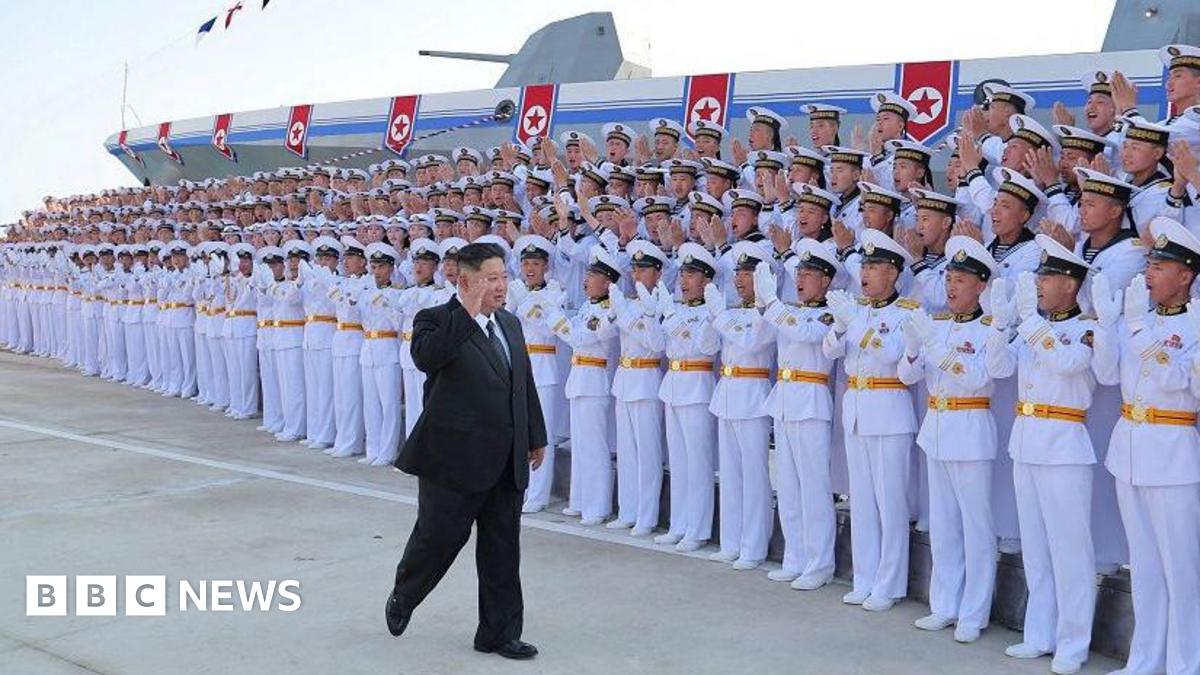According to Mr Choi, who now heads South Korea’s Submarine Research Institute, it is extremely rare for a destroyer of this class to capsize during its construction and launch, given the advanced technology required to build one.
This would therefore have been “a very embarrassing incident” for Kim Jong Un, he said, as it “highlights the limitations of North Korea’s shipbuilding”.
Worse still, this flagship project failed in front of his eyes. Kim was attending the ship’s launch ceremony, along with his daughter and a crowd of spectators.
“North Korea is obsessed with showing off. I imagine they were planning a whole series of performances, so of course Kim couldn’t help but be furious”, Mr Choi added.
But experts in North Korea propaganda believe there is far more to Kim Jong Un’s outburst than raw anger and humiliation.
Choosing to publicise the capsizing in the way he did was a deliberate political strategy, they say, and shows Kim is shifting away from the regime’s tendency to conceal unpleasant truths.
Rachel Minyoung Lee from the Washington-based Stimson Centre, who has analysed North Korean propaganda for decades, explained how this has become a core pillar of Kim’s propaganda strategy.
Before Kim came to power, and even in the early years of his rule, the regime would hide anything negative as a way to control the narrative.
But as information has started to spread more freely in North Korea, it has become harder to cover up such major incidents.
“The leadership decided it was almost silly to try and hide what people already knew, and much more effective to show people they were dealing with problems,” Ms Lee said.
“Now, when there’s a problem, you publicise it, you call out those responsible, and demonstrate to people that if you don’t do your job, you will be held accountable. And in doing so, you let everyone know that the government and the leadership are doing their jobs well”.
In the case of the warship, this strategy appears to have worked remarkably effectively. The repairs were completed ahead of schedule, in just over three weeks, defying the expectations of naval experts.
“The rapid relaunch shows how even a failure can be turned into a political success,” said Kim Dong-yup, an assistant professor at the University of North Korean Studies in Seoul.



